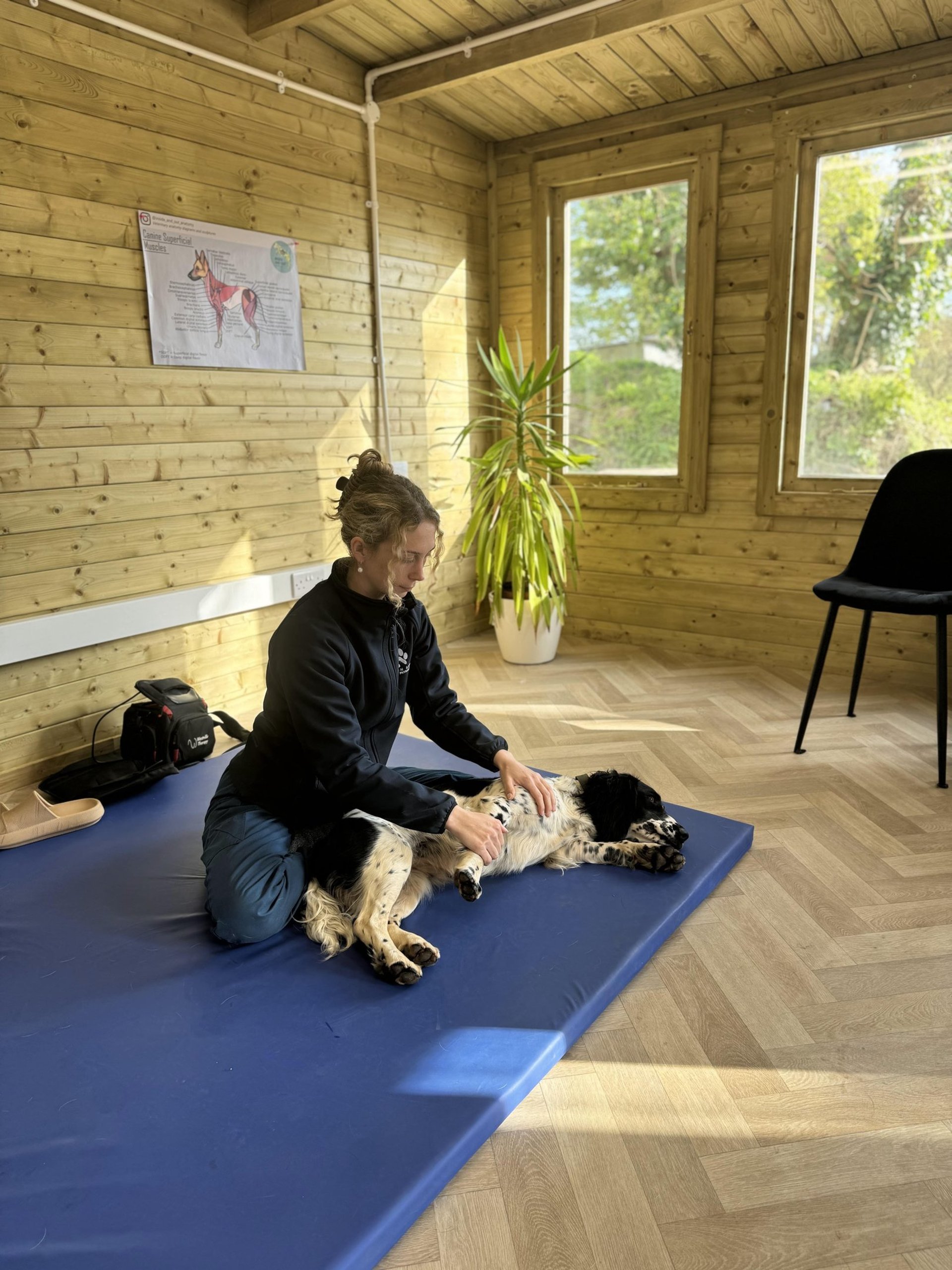Canine Arthritis
Is your dog getting older and finding it difficult to move around the house, go for walks, climb stairs, or jump onto the sofa? These could be signs of arthritis. But don’t worry—there are ways to help your dog stay mobile and comfortable!




Body Health Care
Research shows that regular physical activity is essential for preventing chronic conditions in humans, and the same is true for dogs. Whether your dog has been an active participant in daily walks or is just starting to slow down, maintaining their mobility is key to their well-being. It’s natural to want to help your dog by reducing their physical demands, but too much assistance can actually lead to decreased movement and worsening of their arthritis symptoms..
Comfort Assistance
The most effective way to help your dog regain their ability to walk, climb stairs, and jump onto furniture is through a customized exercise program. While treatments like acupuncture and chiropractic care can offer short-term relief, they don’t address the underlying issue of movement dysfunction. At my practice, I focus on providing a long-term solution through a home exercise program designed specifically for your dog’s needs. This program empowers you to take an active role in maintaining your dog’s health as they age.
Be sure to download My free Arthritis guide for more information
The good news is that even if your dog is already showing signs of arthritis, it’s possible to improve their mobility and comfort through targeted exercise. If you’re curious please contact me. Designed to guide you in supporting your senior dog who may be experiencing progressive weakness and struggling with daily activities. While arthritis is a natural part of aging, how we manage its symptoms can make a significant difference!


Canine CCL
In humans, the ACL is essential for knee stability, and in dogs, the cranial cruciate ligament (CCL) serves a similar function. The good news is that even with a CCL tear, your dog can regain mobility and comfort.
I have successfully helped many dogs who have had TPLO surgery




What To Do / Rehabilitation
Good new is! Many CCL injuries can be effectively managed with the help of a certified canine rehab professional. In some cases, particularly in young, active dogs with a complete tear and meniscus damage, surgery followed by rehabilitation may be necessary to restore full function
I’ve successfully treated many dogs with CCL injuries, working closely with their owners to achieve great outcomes!
CCL Signs
When a dog injures their CCL, you may notice several signs, including:
Swelling in the knee area
Limping or favoring one leg
Limited knee movement
Popping or cracking sounds in the knee
Hesitance to exercise or discomfort when the knee is touched
Shifting weight to one side when standing
Extending the hind leg while sitting
Rehabilitation should always be part of the recovery plan. A canine physiotherapist has specialized training in rehabilitation and can develop a personalized exercise plan tailored to your dog’s specific needs.


Be sure to download My free CCL recovery guide for more information
Success Story
We found Kirsten after our 5 year old springer had cruciate ligament surgery in February this year. We’d had very little advice from the vets, so were anxious about the best course of action for our dog. Belle has really enjoyed every session with Kirsten. She gets excited as we start to drive down the road to Kirsten’s and she has really thrived after having the sessions. Belle’s progress has been amazing and Kirsten has been at the end of the phone ready to offer advice and to ease our worries. Her exercise plan was easy to follow and Belle has come on leaps and bounds in the 6 months since her operation. I cannot recommend Kirsten enough and I am so grateful we found such a great physio!
Hip Dysplasia
Hip dysplasia occurs when the hip joint, which functions like a ball and socket, doesn’t fit together properly. In this condition, the femur’s “ball” doesn’t sit securely in the hip’s “socket,” leading to instability. Over time, this misalignment can cause cartilage wear, bone spurs, pain, and decreased mobility.




Diagnosing And Treating
Hip dysplasia is typically diagnosed through specific physical examinations and hip x-rays conducted by a qualified vet
A canine physiotherapist will assess your dog’s strength, flexibility, movement patterns, and daily activities to create a personalized treatment plan. This plan may include manual therapy to alleviate pain and targeted exercises to improve joint stability and ease of movement.
Signs
Stiffness in the hips when rising from a resting position
Difficulty or discomfort when walking, running, or playing
Limping or lameness in the hind legs
Loss of muscle tone in the hindquarters
A “bunny hop” gait while running
The best treatment approach—whether conservative management or surgery—depends on the severity of the condition and your dog’s age. Regardless of the treatment path, working with a physiotherapist can greatly enhance your dog’s recovery and quality of life.
In some cases, surgery might be the best option, with the most common procedure being a Femoral Head Ostectomy (FHO). However, before considering surgery, it’s important to explore conservative management options, including a healthy diet, weight management, joint supplements, regular exercise, and pain relief when needed.
Be sure to download My Hip Dysplasia recovery guide for more information



